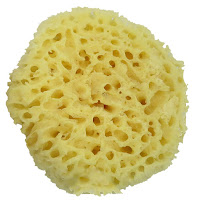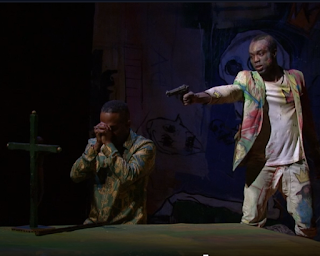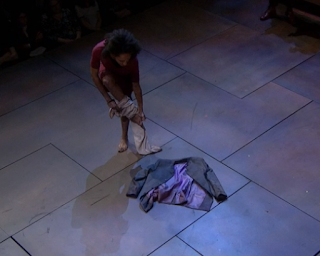Act IV, scene ii: The King is a thing
This is another very short scene, of less than thirty lines; the shortest in the entire play, in fact.
Hamlet describes the body of Polonius as 'Safely stowed' in the opening line. It's an odd description: indicating something neatly stored or packed away - perhaps concealed - but with the suggestion of later use.
Hamlet's speech is disordered and irrational. He speaks in non-sequiturs and riddles when Rosencrantz and Guildenstern arrive, emphasising his distrust of former friends in his depiction of them as foolish: mere sponges who 'soak up the king's countenance' but will get their just desserts when they are squeezed out 'dry' in the end.
Gone is the iambic pentameter that has mostly shaped Hamlet's speech previously, but there is an interesting use of double syntax or syntactic slide at the end of the scene. (This is where meaning is created in one line and then recreated differently in the next - one of my favourite things in poetry; we can talk about this more when class is back up and running again.) It occurs when Hamlet describes Claudius as a 'thing' (IV.ii.27) and is drawn attention to by Guildenstern's interruption. The reductive statement about Claudius is challenged, then qualified. 'The King is a thing-/...of nothing' (IV.ii.27-29).
The Hamlet Podcast covers this scene in Episode 117
As well as keeping your own summary and notes, consider the following:
- Look at Hamlet's 'O, here they come.' (2-3) in reference to the arrival of Rosencrantz and Guildenstern. It's a line that is often used to humorous effect in production - and perhaps to humanise Hamlet further. How might an actor deliver the line as he prepares to meet them? Suggest an action to go alongside.
- Collect examples of the puns and wordplay that Hamlet indulges in during this scene. What is Shakespeare’s intention in creating such play at this point?





Sorry Zara I beat you too it again XD. Is the reference image from 'the thing'!
ReplyDeleteHouse points galore!
Delete